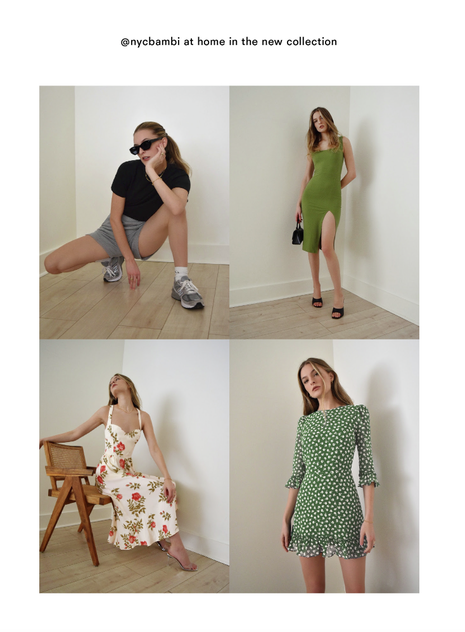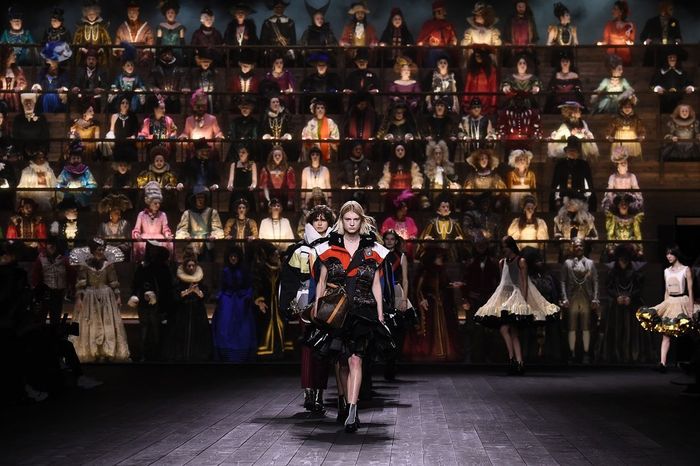How COVID-19 has rewritten the rules of influencer marketing
The fashion industry dominates the investment on Instagram influencer marketing. With the industry on pause indefinitely due to the coronavirus, Fashion Editor Mier Foo explores the uncertain future of the influencer economy.

With a large proportion of the world in lockdown and social distancing becoming the new norm, people are spending more and more time online. Although this has led to an increase in audience engagement for influencers, it has also exposed the precarious nature of the influencer lifestyle.
Fashion influencers have come to occupy a prominent position in the public consciousness in recent years. Open the explore page of Instagram and one is inundated with images of influencers posing in gifted clothes, adorned with designer bags most of their followers would be hard-pressed to afford. Under ordinary circumstances, such conspicuous displays of privilege were tolerated, if not revered as aspirational. However, in the midst of a global pandemic, consumers are no longer buying into the trope of manufactured inspiration peddled by these influencers. Even before the pandemic, the profession was becoming increasingly saturated, and now with consumer demand at an all-time low and brands slashing advertising budgets, influencer marketing faces an uncertain future.
Instagram influencer Arielle Charnas (@ariellecharnas) was widely condemned in recent weeks after her decision to move to the Hamptons after her coronavirus diagnosis. The lifestyle and fashion blogger drew ire from all sides for flouting self-isolation measures set in place by the government, all of which was documented in a series of posts and stories uploaded to her personal Instagram account. In one post, which has since been deleted, Charnas can be seen taking a casual stroll around the neighbourhood in a Max Mara teddy bear coat (which runs upwards of several thousand dollars) with her daughter in tow, also wearing a matching coat. In another, she is perched on the porch steps of her palatial Hamptons mansion promoting a loungewear set in Chanel ankle boots, no less. Prior to moving, Charnas had also filmed the swift procedure of herself getting tested for the virus in a time when tests were hard to come by. To add insult to injury, she unboxed a new Louis Vuitton purse sent to her by the brand on her Instagram story while awaiting her test results.
In response to criticism, she defended her actions as an attempt “to bring back some normalcy to our lives,” failing to acknowledge the fact that for some the consequences of the coronavirus are inescapable. “If it offends anyone or seems as though I’m being insensitive during this time, I’m sorry but it’s what I’ve chosen to do. Back to regular content/programming,” she continues. Lifestyle brand Goop (@goop) helmed by Gwyneth Paltrow, was also criticised when it featured a photograph of their founder advertising four hundred dollar designer sneakers on their Instagram page with detractors calling the move “tone-deaf” under current circumstances.
In the beginning, the rise of the influencers was heralded as a democratisation of celebrity culture. In 2016, an article in Forbes declared fashion influencers “the new celebrity endorsements”. The successfulness of such ‘influencers’ are dependent on their ability to present an ‘authentic’ persona to their audience, then leverage that relationship into brand deals and sponsorships which more often than not translates into a highly stylised Instagram aesthetic. The more genuine one appears, the more successful they are in building a following. The coronavirus crisis has upended this dynamic by revealing the cracks behind the facade of perceived ‘authenticity’ that underlies the core of the influencer economy.

In dire times, it is impossible to overlook the latent privilege inherent in being able to produce such aspirational content, and an insistence on carrying on under normal circumstances only further serves to reiterate the point. As such, influencers are facing a dilemma. Unlike their celebrity counterparts who have other main sources of income to fall back on, influencers are primarily dependent on social media for their livelihood. If they stop posting, they are effectively cauterising their main revenue stream. However, if they continue to do so, they risk upsetting their followers over the same self-aggrandisement that built their brands in the first place.
Not to say that all influencer content has been unwelcome. At the outset of the pandemic, millennial favourite eco-fashion brand Reformation reached out to their followers on Instagram, asking users to take the lead in dictating what kind of content they would prefer to see from the brand, if any. The post on the brand’s Instagram page strikes an intimately confessional tone: What’s resonating with you? it asks. With everyone sequestered in their homes, the quarantine period has given us a rare glimpse into the unfiltered lives of these influencers, albeit temporarily.
“The unprecedented metastisation of the virus has the potential to precipitate if not the end of, certainly the decline of the influencer economy.”
Limited in their ability to generate new content, some influencers have taken this fallow period to stoke creativity through capitalising on their surroundings and cultivating a deeper connection with their following. The Reformation’s latest campaign features New York-based blogger and influencer Christie Tyler (@nycbambi) in a series of tastefully staged photographs captured by her partner in a corner of her apartment while self-isolating at home. The results were so impressive I could barely discern them from the usual professional studio shots featured on the site. It is a testament to the possibility of still creating quality content that provides a welcome dose of escapism whilst remaining cognisant of the volatile times we are in.
More than ever, the internet has our rapt attention. This period could mark a crucial turning point for the influencer economy. The unprecedented metastisation of the virus has the potential to precipitate if not its end, then certainly its decline. If influencers want to retain their audience, they have to move beyond trite platitudes of reassurance masquerading as relatability. If anything, recent events have revealed the limits of such personalised brands of authenticity. The lack of self-awareness epitomised by influencers like Charnas is a timely reminder that despite the multifaceted nature of ‘influencing’, it is still fundamentally an advertising mechanism, designed to profit off likability.
 Comment / Plastic pubs: the problem with Cambridge alehouses 5 January 2026
Comment / Plastic pubs: the problem with Cambridge alehouses 5 January 2026 News / Cambridge businesses concerned infrastructure delays will hurt growth5 January 2026
News / Cambridge businesses concerned infrastructure delays will hurt growth5 January 2026 News / New movement ‘Cambridge is Chopped’ launched to fight against hate crime7 January 2026
News / New movement ‘Cambridge is Chopped’ launched to fight against hate crime7 January 2026 News / AstraZeneca sues for £32 million over faulty construction at Cambridge Campus31 December 2025
News / AstraZeneca sues for £32 million over faulty construction at Cambridge Campus31 December 2025 Interviews / You don’t need to peak at Cambridge, says Robin Harding31 December 2025
Interviews / You don’t need to peak at Cambridge, says Robin Harding31 December 2025










